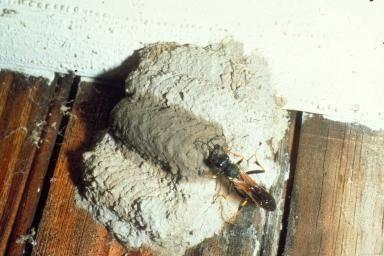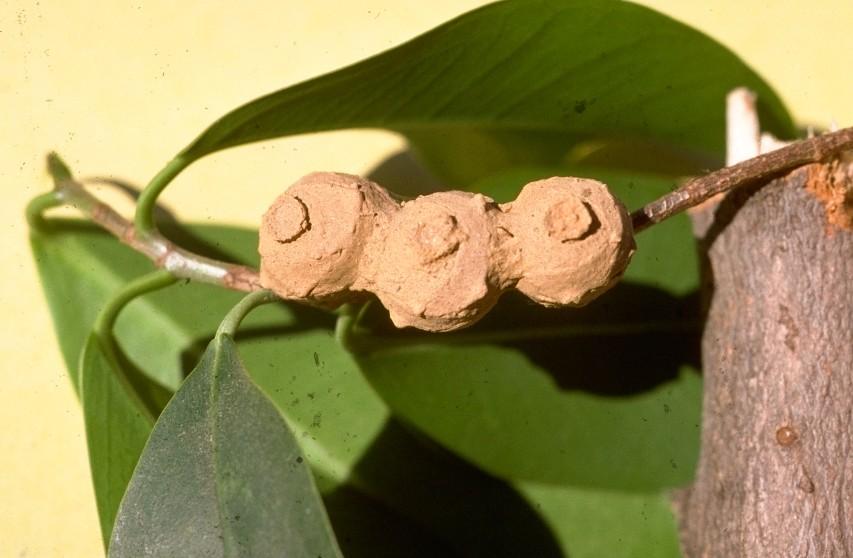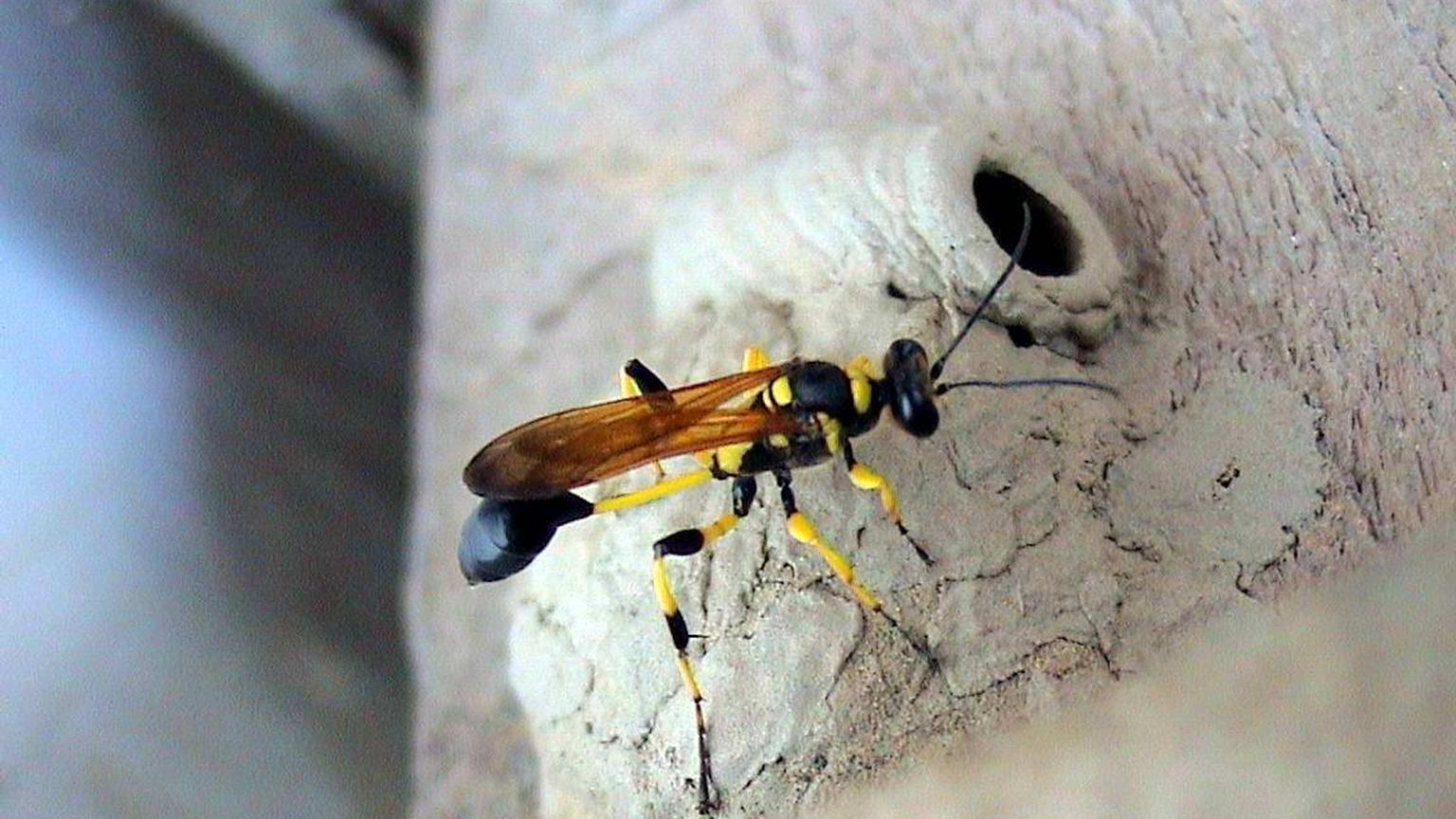About mud dauber wasps
-
Mud daubers are dark, often metallic black or blue wasps with long thin waists. Common species are the organ pipe mud daubers, Tropoxylon clavatum (Say) and T. politum (Say), the black and yellow mud dauber, Sceliphron caementarium (Drury), and the blue mud dauber, Chalybion californicum (Saussure).
-
Two closely related groups are the potter wasps and mason wasps.
-
Mud dauber wasps are not aggressive.
-
They are most often encountered either at puddles where they are collecting mud, or where they are building their mud nests.

Black and yellow mud dauber building a nest. Photo: Howard Ensign Evans, Colorado State University, Bugwood.org
Nests
-
Mud daubers construct "nests" or brood chambers out of mud. Mud daubers' nests are found stuck to the walls of buildings and the sides of equipment. They are also plastered inside electric motor housings of unused machinery.
-
The nests are stocked with spiders paralyzed by a sting. Inside their mud cells, the young wasps eat the spiders. When nests are knocked down (the best method of control), the spiders skins are all that is left to see.
-
Potter wasps, which are predators of caterpillars, construct small mud nests shaped like clay pots with a narrow neck. These are attached individually to sheltered areas such as buildings, twigs or fences.

Potter wasp nests. Photo: John Davidson, University of Maryland
-
Simply knock down the nest if it is located in an undesirable area. Otherwise, leave these creatures alone. They are part of the beautiful web of life and add to Maryland’s biodiversity.
Read more about black and yellow mud dauber wasps, by Dr. Micahel Raupp, University of Maryland.
Rev. 2020
